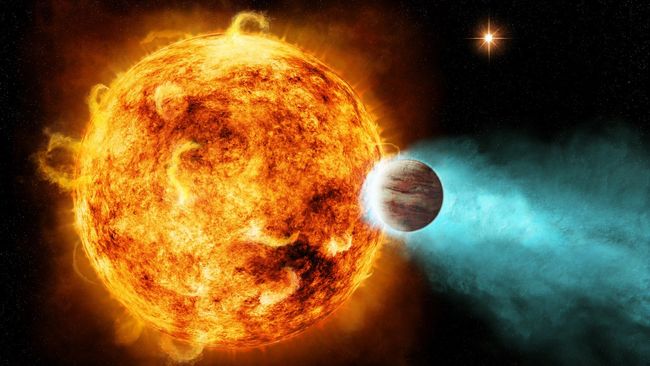The Planets in Our Solar System Aren’t Unusual; Exoplanets Also Exhibit Tilted Orbits
It’s akin to observing a distorted reflection of ourselves in a carnival funhouse mirror
While scientists have long known that planets within our solar system exhibit slightly tilted orbits as they orbit the sun, a recent study suggests that this phenomenon is not unique to our cosmic vicinity. The research reveals that distant exoplanets also commonly display tilted orbits, challenging previous assumptions about the factors influencing orbital inclinations.

For instance, in our solar system, most planets, including Earth, maintain orbits within approximately six degrees of the ecliptic, the orbital plane around the sun. This modest tilt was previously attributed to the gravitational influence of giant stars or planets, particularly those of Jupiter’s size or larger, potentially perturbing the orbits of smaller planets significantly. However, recent findings from a study led by Yale University indicate that even in “pristine” star systems unaffected by such gravitational disturbances, planets can exhibit tilted orbits, reaching angles as high as 20 degrees from the horizontal.
Lead author Malena Rice, a Yale astronomer, expressed reassurance about the findings, stating that it indicates our solar system isn’t exceptionally peculiar. Rice likened the situation to “looking at ourselves in a funhouse mirror” and gaining insights into how our system fits into the broader cosmic context.
The discovery emerged during the team’s investigation of “hot Jupiter” solar systems, characterized by gas giant planets with extremely close orbits to their parent stars, completing revolutions in less than 10 Earth days. The study focused on the gas giant TOI-2202 b, a “warm Jupiter” with a 12-day orbit, and found its tilted orbit resembled those of planets in the NASA Exoplanet Archive, highlighting a commonality in orbital inclinations among planets of similar size and orbit.
Rice emphasized the need to understand why systems with hot Jupiters exhibit extremely tilted orbits and whether these tilts are inherent or acquired over time. The findings from this research could contribute to a better understanding of how solar systems form, shedding light on the factors influencing planetary tilts in both our immediate cosmic neighborhood and beyond. The study is part of the Stellar Obliquities in Long-period Exoplanet Systems (SOLES) survey, led by Rice and co-led by Songhu Wang, a former Yale postdoctoral fellow now at Indiana University.
The research study was published Tuesday (Nov. 28) in the Astronomical Journal.
Do not forget to share your opinion with us to provide you with the best posts !



0 Comments